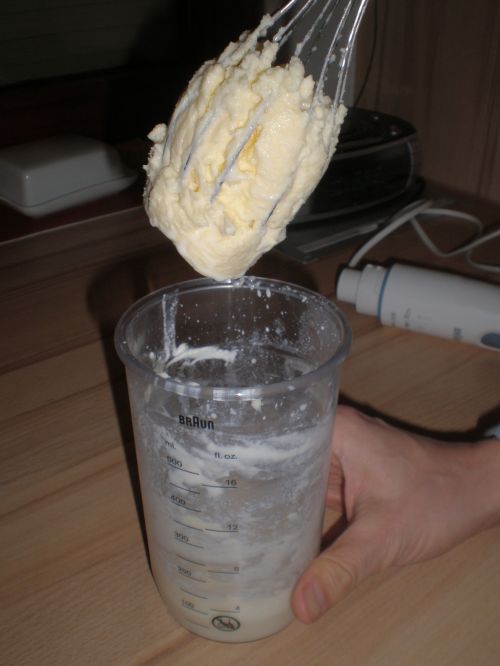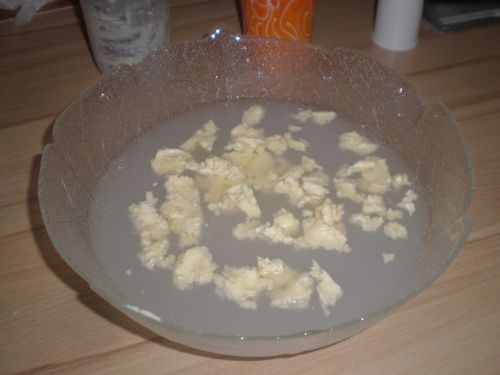Better Living through Butter
There is something missing when French toast or blueberry pancakes are naked of a pat of butter melting and spreading all over their surface. This milk derivative also enriches the standard Wiener Frühstück (Viennese breakfast) offered in cafés: rolls with butter and jam (preferably apricot) accompanied by a cup of coffee. Crêpes taste and turn out the best when butter is used to grease the pan. And sometimes a dollop of butter on top is all a bowl of polenta needs on a cold winter’s night.
Butter is predominantly made from milk from cows. When cow’s milk is left to rest, the rich cream will separate and rise to the top. This cream can either be churned directly to make sweet cream butter (common in the U.S. and U.K.) or fermented and then churned to make cultured butter (common in continental Europe). Salt may be added as a preservative. The color of butter depends on the animal’s diet. Grass-fed cows produce yellower butter thanks to the carotenoids in grass. Unfortunately, it is hard to tell just by looking at butter what the cows ate because the food industry regularly dyes butter obtained from grain-fed cows to make it look more authentic to consumers. Milk from grass-fed cows contains more Omega-3 fatty acids and conjugated linoleic acid than milk from grain-fed cows. We are lucky here that Heumilch (literally “hay milk,” referring to milk from pasture-fed cows) products make up 15% of all milk products made in Austria.
I had been wanting to try my hand at homemade butter since reading a book about making all sorts of food at home. Last month I reread the Laura Ingalls Wilder Little House books still in my possession, which brought home to me how much I was influenced by the whole DIY pioneer ethic of the series. The first book in the series sets Thursday as the day of the week to churn butter. But it wasn’t just the influence of books that led to this project. One of my goals this year is to reduce the amount of packaging I bring home. Cream at the organic grocery store comes in jars that can be returned while butter comes in packaging that must be thrown away. In short, the time was finally ripe.
I bought a jar of cream (36% fat, 250 ml) and let it come to room temperature. After I had brought the cream to room temperature, got distracted or lazy, and recooled it three times, TC finally took charge of the situation and prepared to churn. Well, mix. Though we have a butter mold lying around from days of yore, no churn has survived. We could have chose to shake, but all our glass jars were busy storing dried goods and jam.
It was surprising how quickly we had butter. In just about three minutes, the buttermilk and butter began to separate.
The newborn butter should be rinsed in cold water and kneaded to force out any remaining buttermilk, whose presence increases the likelihood that the butter will become rancid.
Our butter yield was about half the weight of the cream, approximately 125 g, plus a glass of buttermilk for master mixer TC. Though it is true that we pay more out of our own pockets to make butter instead of buying it (EUR 1.99 for 250 g organic butter vs. EUR 1.69 for 250 g organic cream yielding 125 g butter), we are planning on continuing to make butter ourselves for a few reasons. First, it’s fun. Second, it decreases the packaging we throw away (and avoids consuming energy to make and then dispose of the packaging). Finally, assuming that our butter consumption remains the same as it was in 2012 (an average of 2.5 kilos per person), the difference in cost between making our own butter and buying it ready made for one year is roughly what it costs for the two of us to go out to dinner one time. In the end, small “sacrifices” (i.e. not going out to eat once, which many times is not a sacrifice at all) can add up to savings (20 butter wrappers that don’t need to be produced and disposed of) somewhere else in the system.










